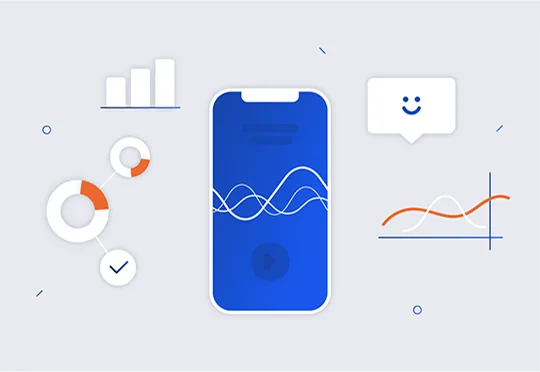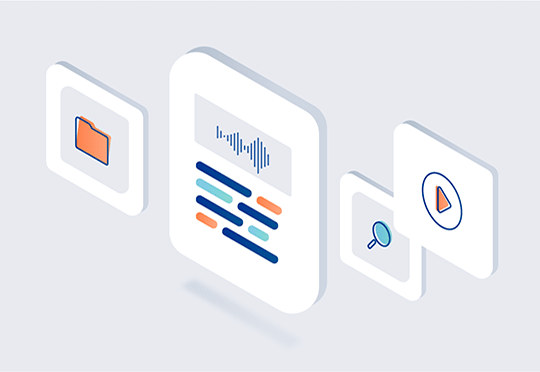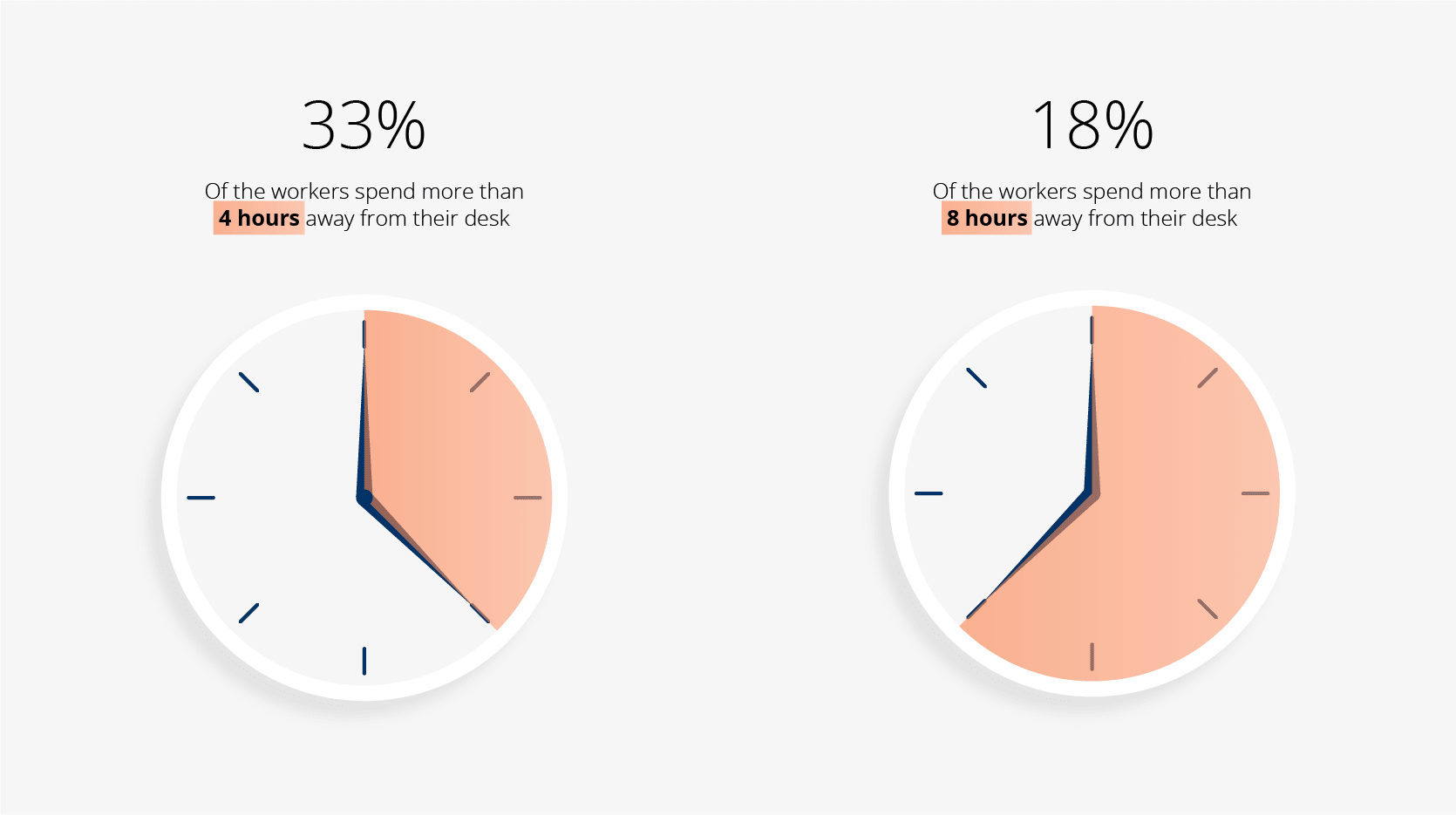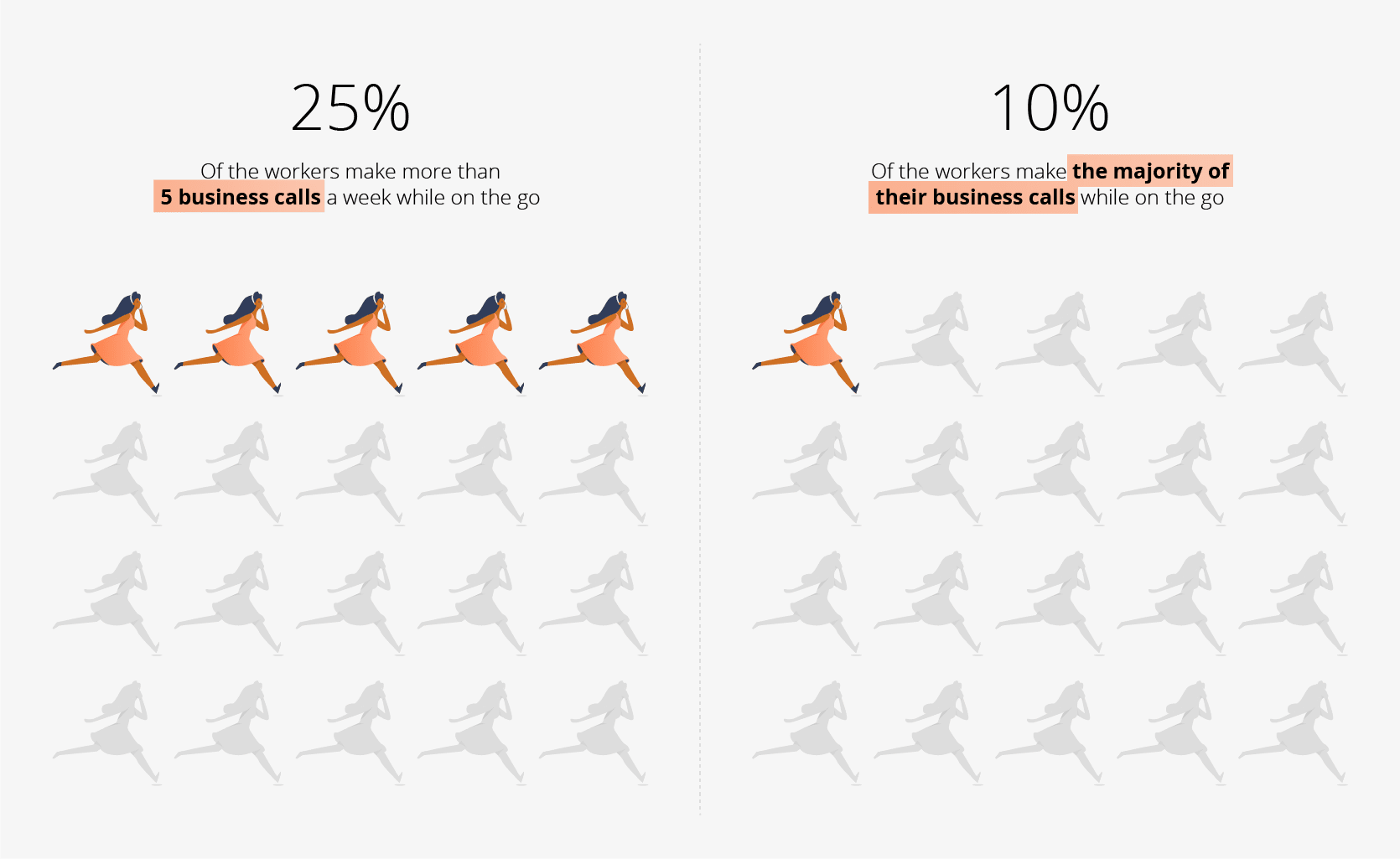
It’s all in the palm of your hand
Out of the office and wish you could find your notes from an important phone call or meeting? With the latest version of the Dubber mobile app, you can play back your calls and meetings: anytime, anywhere, from any phone.
Keep all your recordings in the palm of your hand with the Dubber mobile app, available on iOS and Android. Play, share, organise, and analyse your calls with our powerful Zoe voice AI, from anywhere in the world. The app now comes with the new Meeting Recorder tool, which allows users to record meetings and store them securely in the cloud.
The full Dubber experience in an app
Working life doesn’t stop when you leave the office. With the Dubber app, you are no longer tied to your computer. From your phone, you can experience the full suite of Dubber tools wherever you are. View and listen to all of your recorded calls and meetings, just as you would in the web browser version of Dubber.
Our easy search means you can find calls using a range of criteria from date and time to call recipient. Within the playback page you can skip forward to replay an important detail or, if you have Zoe enabled, search the transcription and click on a word to play a conversation from that exact moment.
Tag your recordings from the app to organise them for easy retrieval and management. For a quick highlight of calls that require your action, mark your important calls with our star icon and separate them from the rest of your archive.
Zoe: powerful voice AI in your pocket
The Dubber app enables you to access the power of Zoe voice AI in the palm of your hand: transcribing your calls and meetings, measuring sentiment, and extracting keywords, timestamps and other metadata. Zoe can automate workflows through API integrations with third-party applications such as your CRM. With Zoe Notifications, you can create custom keyword and sentiment alerts to protect your business through proactive customer service.
Meeting Recorder: The death of minute taking?
Meeting Recorder is an exclusive recording tool with voice AI for smart transcription, available as part of the Dubber mobile app. Meeting Recorder securely stores all of your meetings in the cloud so they can be accessed from multiple devices and locations, and you’ll never run out of storage. Hit record during important meetings and talks and let the power of Dubber’s voice AI do the rest.
Meeting Recorder is the only recording app available with Zoe voice AI, eradicating the need for taking minutes with automated voice-to-text transcription. The transcript of the meeting can then be circulated as a follow-up. Zoe also allows you to search for meetings by keywords spoken, as well as within the transcript of a meeting: allowing you to pinpoint the exact part of a meeting you want to review. Sentiment is even analysed: showing an overall rating for the meeting, as well as a detailed breakdown.
Meeting Recorder is an ideal tool for sales and project managers who want to capture their team meetings in order to follow up on action points or as a coaching resource.







